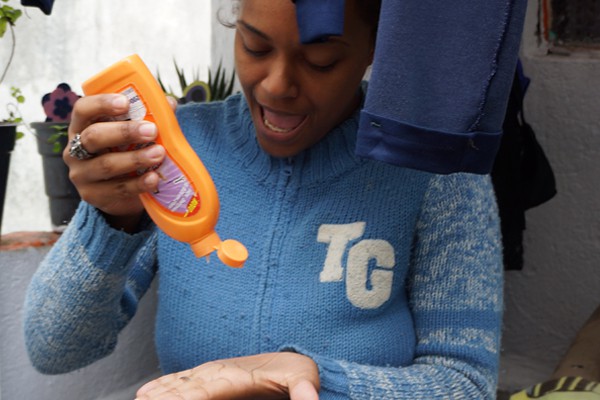Why Aren’t there Cutting Boards in Greek Kitchens? Making the Most of Remote Consumer Research.
Our article on customer intimacy suggested going beyond standard observational and interview-based techniques to extend some of the richness of field-based ethnographic research to remote consumer research. In this article, we propose using self-recording video as a remote method combined with a sensory ethnography framework to inform research design, data interpretation, and sensemaking.
Why self-recording? Self-authored videos allow participants to engage in their own time and can be strategically framed to foster more profound self-reflection, ultimately yielding more insightful data. Sensory ethnography, developed by Design Anthropologist Sarah Pink, pushes us to be especially attuned to how people experience their daily activities and environments beyond what can be articulated in a typical in-depth interview (IDI).
Ethnographers are interested in bringing to life other people’s experiences authentically. We use methods that go beyond interviewing and observation to explore each participants’ sensory world. All are an invaluable part of the design researcher’s toolkit.
Let’s explore a few practices that can make remote consumer research more effective.
1. The Five Cups of Tea Method: Explore Spaces of Self-Reflection and Transition
For remote self-video to be productive and of real value, one good starting place is to focus the content on rituals of self-reflection or transition that are baked into specific activities within the context of everyday life.
An example of this approach is the Five Cups of Tea method. This consumer research methodology was developed by an ethnographer who observed the culturally prescribed tea drinking routine of her British middle-class research participants as an opportunity to connect with them in a naturalistic, relatively unobtrusive setting. Equipped with a video camera and a pre-circulated packet of questions, participants recorded themselves preparing and having their tea on five occasions during the week. During this time, they would reflect on the research questions while carrying out their routine and capturing the experience on video. The videos yielded insights that were tightly focused around the research objectives but also provided rich contextual information about the flow of people’s daily lives, the contexts of their homes, and their sensory experiences.
This technique can be adapted depending on the cultural context and objectives of the sensory and consumer research project. Rituals like coffee breaks, morning routines, bedtime habits, and food preparation or consumption can be engaged with through a similar method. Different levels of researcher engagement can also be incorporated, from the activities being entirely self-directed to including video accompaniment and probing throughout the process, or via a debriefing afterward.
2. Everyday Embodied Practices and Sensemaking
Creating video content is only the first step. We can make the most of remote consumer research by following the lead of sensory ethnography to mine video data for embodied practices. Embodied practices are the subtle and implicit ways people do things that only emerge as they are engaged in the practice itself. These practices are an essential part of the durable structures of culture and can provide vital clues in product design and innovation.
This observational and sensemaking process is best illustrated through an example. The short video compilation below is part of an in-depth ethnography by anthropologist David Sutton on everyday cooking in Kalymnos, Greece. Although not conducted remotely, similar remote “activity visits” can be performed this way easily and are an excellent example of insights that can be gleaned from a video of everyday activities like cooking. This example also happens to raise interesting questions for a hypothetical design project on kitchen products, which reinforces the importance of starting from qualitative data that is rooted in people’s actual lives—interpreting that data through a holistic lens, taking into consideration the material, social and ideational dimensions of people situated in their particular cultural context.
As you watch the video, you might notice a pattern: Why isn’t anyone using cutting boards or countertops? You’ll see that the home cooks are rather precariously cutting the vegetables in their hands and letting them fall directly into the pot or pan. Why? How might researchers tasked with engaging in a project in this space go about understanding this practice?
3. It’s Not Just About Counter Space: The Reason behind the Reason and Its Design Implications
Once you’ve identified an embodied practice in the video footage, you can begin to explore the why. In our Greek kitchen example, the answer isn’t immediately apparent. Let’s look at one plausible explanation: there is limited counter space in the kitchens so that the cutting-in-hand technique could be practical. It could be an adaptation to the kitchen’s limited space, serving as a logical and efficient response to the shortcomings of the built environment. This explanation might result in insights that lead the client to create a better cutting board, a larger cutting space, or ramp up marketing for more “convenient” or “efficient” products, like cutting boards.
These “fixes” wouldn’t be wanted, because the underlying assumption — Kalymnians would prefer to use a cutting board, but don’t because of practical reasons — isn’t correct.
As the anthropologist revealed, the practice has its roots in social life, not merely material realities — using a countertop cutting board requires turning one’s back to others in and around the space of the kitchen, effectively closing them off to social interaction and the rest of the home. On the other hand, cutting-in-hand allows the cook to engage with others and be more involved in the home space while preparing food, facing whatever direction they desire. Sutton calls this a “technique of the body,” involving a degree of skill and enabling the cook to be socially alive and engaged in space in a way that a person rooted to a countertop with a cutting board would not. For innovation, the solutions are manifested differently depending on the insight and identified “problem.” One is narrowly focused on the “problem” of limited counter space versus the other, an opportunity to find ways to support sociality in food preparation.
In remote ethnography, remember: watch the tape — and drop your assumptions.
As design researchers, we need to remember that humans are always adapting their technologies to suit their social needs and aspirations, in ways both ingenious and improvisational. Only by thinking holistically about the built environment, social life, and culture can we pull back the curtain on why Kalymnians cut their food this way — and on all of the other fascinating questions that are out there for us to understand, and for developing new design solutions.
If you interested in conducting remote consumer research? Contact THRIVE today to see how we can help you achieve your research goals
Links:
THRIVE blog article link – https://thrivethinking.com/2020/04/28/customer-intimacy-design-research/
Pink, Sarah – https://uk.sagepub.com/en-gb/eur/doing-sensory-ethnography/book242776
Moroşanu, Roxana 2016 An Ethnography of Household Energy Demand in the UK: Everyday Temporalities of Digital Media Usage, Basingstoke: Palgrave Macmillan.
https://www.palgrave.com/gp/book/9781349934744
https://www.bloomsbury.com/uk/making-taste-public-9781350052680/
Sutton, David E., 2014. Secrets from the Greek Kitchen: Cooking, Skill, and Everyday Life on an Aegean Island. University of California Press.
https://www.ucpress.edu/book/9780520280557/secrets-from-the-greek-kitche
Sensemaking – https://www.hachettebooks.com/titles/christian-madsbjerg/sensemaking/9780316393249/









